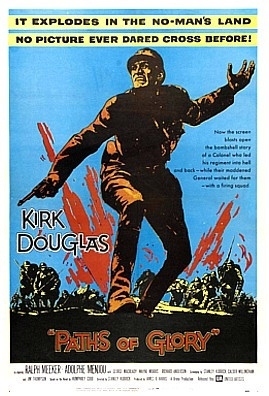RAND's 'Paths to Victory': A valuable new study of what works in COIN campaigns -- and also of what doesn't

By Kalev I. Sepp
Best Defense office
of COIN best practices
As the Vietnam War drew longer and bloodier, a wry joke went
around that the statistics-minded McNamara ordered his staff to collect all the
numerical data reported from the war zone, feed it into a computer, and ask it,
"When will we win the war?" The computer clicked and whirred, and finally
replied, "You won three years ago."
The numbers-crunching by analysts that worked when hunting
U-boats, optimizing bombing patterns of industrial centers, and even
calculating outcomes of hypothetical nuclear wars, seemed to have no relevance
combating guerrillas in a "people's war." Intuitive masters of insurgency and
counterinsurgency, like Lawrence, Mao, Galula, Templer, and Kilcullen, seemed
to be the only viable sources of "how-to" guidance to deal with armed rebellion
and revolutionary warfare.
Now, the RAND Corporation has produced a revealing and
convincing study that makes numbers an analytic tool for irregular warfare
believable. RAND has researched and written on counterinsurgency, or COIN, for
five decades, and that experience shows well.
Paths to Victory: Lessons
from Modern Insurgencies builds on RAND's already notable Victory has a Thousand Fathers: Sources of
Success in Counterinsurgency. The same team of authors -- Christopher Paul,
Colin P. Clarke, and Beth Grill, joined for this edition by Molly Dunigan --
expand the number of case studies from 30 to 71, and begin earlier, in 1944,
carrying their examination to the present day.
This is impressive enough. The 48 pages of summaries of
insurgencies ranging from Greece and Malaya to Nagorno-Karabakh (in Azerbaijan,
1992-94) are valuable reading by themselves. Duly excluding coups and ongoing
conflicts, and including only state vs. non-state combatants, the list still
takes in fights in every type of terrain (mountains, jungles, deserts, cities),
among all cultures (Africa, Latin America, Central Asia, the Balkans, the Far
East, et alia), and with all militaries (both the insurgent and
counterinsurgent forces).
What is more remarkable is the depth and detail of the
authors' painstaking analyses of these counterinsurgencies, and their extensive
findings. These lists will likely ring true with veterans of all ranks of the
wars in Iraq and Afghanistan, whether they planned national-level campaigns on
a general staff, or patrolled streets and mountain trails with a rifle squad.
Holding to their stated purpose -- to discern "what
strategies and approaches give the government the best chance of prevailing" in
an insurgency -- the authors generate 24 COIN concepts that either strongly or
minimally support a positive outcome for a government fighting rebels. The
"strong" concepts may seem obvious, like border control and criticality of
intelligence. The surprise is which concepts are rated as minimally helpful,
such as the supposedly essential tenets of democracy, amnesty, and "putting a
local face on it."
There are also extensive lists of effective practices
utilized in winning counterinsurgency struggles (a significant and
sophisticated improvement over this writer's own 2005 list of "Best Practices
in Counterinsurgency" in Military Review).
One of the most common is government action to effect "tangible support
reduction" to the insurgency from the population and any external power. Conversely,
the authors' analyses show that the "crush them" approach by a government --
escalating repression and collective punishment -- has seen success in only one
out of three campaigns.
Given the ongoing debates about how the United States might
come to the aid of an ally fighting an insurgency in the future, Paths to Victory identifies 28
historical cases of a major external power contributing its own forces to the
counterinsurgent side. In a half-and-half split, the major power contribution
in 13 fights was limited to advisors, special operations forces, and air power.
The other 15 involved large-scale troop commitments by the major power. However,
further analysis of those cases shows that externally supported COIN forces
were no more effective than wholly indigenous forces. This may lead to a
re-evaluation of the decision to commit main-force U.S. and NATO units in
Afghanistan in 2002, after the Taliban had been defeated by Afghan rebel armies
aided by 400 able Special Forces troops and Central Intelligence Agency
officers, and compelling U.S. air power.
To persuade the reader that their conclusions are well
grounded, the authors devote much of Paths
to Victory to explaining the thorough methodological processes they
employed in their research. Liberal arts majors need to brace themselves for
entry into the realm of bivariate relations, factor stacking, and "fuzzy"
versus "crisp" sets of qualitative comparative analysis (QCA's to the
initiated). The reward is worth the reading, though, in the numerous well-drawn
charts and scorecards that illuminate the findings, and could readily serve as
tools for evaluating future COIN engagements.
Paths to Victory
has two additional merits. The authors establish and use straightforward, broad
definitions of counterinsurgency terms (or "victory"). They don't bend word
meanings to fit their results, or vice versa. They also avoid epistemological
judgment of any given COIN theory or doctrine. It would've detracted from the
presentation of their pragmatic findings. However, the military thinkers
concerned with those theories and doctrines -- such as the team hard at work on
the next version of FM 3-24,
Counterinsurgency -- will find fresh perspectives on COIN in Paths to Victory. The numbers often tell
a surprising story. Understanding them may be crucial to prevailing in the kind
of wars the United States is most likely to fight.
Dr. Kalev I. Sepp
lectures on defense analysis at the Naval Postgraduate School in Monterey,
California. He served as deputy assistant secretary of defense for special
operations,
was co-author
of the Iraq War "COIN Survey,"
and earned his Combat
Infantryman's Badge in the Salvadoran Civil War.
Thomas E. Ricks's Blog
- Thomas E. Ricks's profile
- 437 followers



